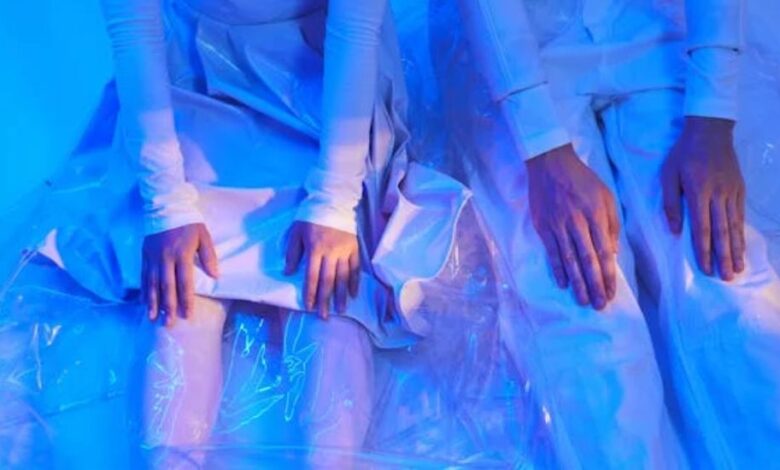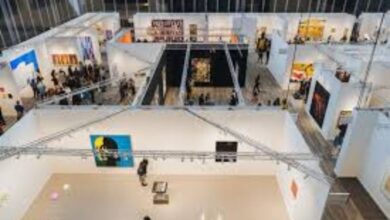The Art of Visuals: A Deep Dive into Creative Expression

Visual art is one of the most powerful forms of communication. Through color, shape, form, and design, the “art of visuals” touches the emotions and thoughts of individuals across cultures and times. The world we see is a visual one, and throughout history, artists have captured and shaped our understanding of that world through the medium of visuals. Whether through painting, photography, digital design, or film, the “art of visuals” is a universal language.
At USA Magzines, we recognize that the “art of visuals” is more than just an aesthetic choice—it’s a form of storytelling, a way to evoke emotions, and a tool to communicate complex ideas. In this article, we explore the various dimensions of the “art of visuals” and its profound impact on human perception and society.
What is the Art of Visuals?
The “art of visuals” refers to the creation and appreciation of visual elements that communicate ideas, emotions, and narratives. This term encompasses all forms of visual art, including painting, sculpture, photography, graphic design, animation, and even video games. The essential characteristic of the “art of visuals” is its ability to convey meaning through images rather than words.
At the core of the “art of visuals” is the idea that humans are naturally visual creatures. A single image can tell a story, provoke thought, or elicit a deep emotional response in ways that words sometimes cannot. The use of visuals is not just about decoration or aesthetics—it’s about creating an experience for the viewer.
The Historical Context of the Art of Visuals
The “art of visuals” has been a fundamental aspect of human culture for millennia. Ancient cave paintings, Egyptian hieroglyphs, and classical sculpture all highlight how civilizations have used visuals to record history, express beliefs, and celebrate life. The Renaissance period was a time when the “art of visuals” reached new heights in painting and sculpture, with masters like Leonardo da Vinci and Michelangelo transforming the way people saw the world.
Fast forward to the modern era, and the invention of photography and digital technology has revolutionized the “art of visuals.” Today, we live in a world where visuals are part of our daily lives, from social media to advertising, and the ability to create compelling visuals has become an essential skill in many industries. At USA Magzines, we see this evolution and appreciate the rich history behind today’s visual arts.
Elements of the Art of Visuals
The “art of visuals” is built on several key elements that work together to create an impactful experience. These elements are essential tools for any artist or designer, whether they are working in traditional mediums like paint and canvas or in digital platforms.
- Color: Color has a powerful effect on emotions and perceptions. It can create mood, highlight important details, and convey meaning. Warm colors like red and yellow can evoke energy and passion, while cool colors like blue and green can bring a sense of calm and serenity.
- Composition: How elements are arranged in a visual piece is crucial to its overall effect. Composition involves the placement of objects, shapes, and figures within the visual space to guide the viewer’s eye and create balance.
- Form and Shape: The physical form or shape of elements within a visual work affects how the viewer interprets it. Abstract forms can create a sense of mystery, while realistic shapes can communicate clarity and familiarity.
- Texture: Visual texture adds depth and richness to a piece of art, making it more engaging. It can be actual, as in sculpture, or implied, as in painting or digital design.
- Contrast: Contrast in visuals refers to the difference in color, light, or form that makes certain elements stand out. It can be used to draw attention to focal points or create a sense of drama.
These elements, when combined skillfully, make the “art of visuals” an immersive and evocative experience.
The Digital Age and the Art of Visuals
The advent of the digital age has had a profound impact on the “art of visuals.” Technology has democratized the creation and distribution of visual content, making it easier than ever for people to create and share their work with the world. Digital art, animation, 3D design, and graphic illustration are just a few examples of how technology has expanded the boundaries of visual art.
At USA Magzines, we see the rise of digital platforms like Instagram, Pinterest, and YouTube as a testament to the power of the “art of visuals” in the digital space. These platforms are visual by nature and provide artists and designers with new ways to showcase their work and connect with global audiences. Moreover, digital tools like Adobe Photoshop, Illustrator, and Blender have enabled artists to experiment with new techniques and create visuals that were once unimaginable.
However, the digital transformation of the “art of visuals” has also raised new challenges. The oversaturation of visual content means that artists and designers must work harder to create visuals that stand out. Furthermore, issues related to intellectual property and originality in the digital realm are becoming increasingly important.
The Role of the Art of Visuals in Communication
The “art of visuals” is not only about creating beautiful images—it’s also a critical tool for communication. Visuals can transcend language barriers, making them an effective way to communicate ideas in a globalized world. In fields like advertising, branding, and marketing, visuals play a key role in shaping consumer perceptions and driving engagement.
At USA Magzines, we understand how powerful visuals can be in conveying messages. A well-designed logo, for example, can encapsulate a brand’s identity in a single image. In the world of social media, a captivating visual can generate thousands of likes, shares, and comments, boosting visibility and engagement. Visuals have the ability to communicate complex ideas quickly and effectively, making them invaluable in our fast-paced, media-saturated environment.
The Emotional Impact of the Art of Visuals
One of the most compelling aspects of the “art of visuals” is its ability to evoke strong emotional responses. Whether it’s the awe-inspiring beauty of a landscape photograph, the haunting atmosphere of a surrealist painting, or the excitement of a vibrant digital illustration, visuals have the power to connect with viewers on a deep emotional level.
Psychologically, humans are wired to respond to images. The brain processes visuals faster than text, and our emotions are often triggered by what we see. This is why artists and designers pay close attention to the emotional impact of their work. In advertising, for example, visuals are used strategically to evoke emotions like happiness, nostalgia, or desire, influencing consumer behavior.
At USA Magzines, we value the emotional power of the “art of visuals” and its ability to move audiences in profound ways. Whether in art galleries, on social media, or in films, the emotional impact of visuals continues to shape our experiences and perceptions.
Conclusion: The Future of the Art of Visuals
As we look to the future, the “art of visuals” will continue to evolve. New technologies like virtual reality (VR), augmented reality (AR), and artificial intelligence (AI) are already transforming the way we create and interact with visual art. Artists are exploring new mediums and pushing the boundaries of traditional art forms, while the accessibility of digital tools is empowering more people to express themselves visually.
At USA Magzines, we believe that the “art of visuals” will remain a vital part of human expression. Whether through traditional painting or cutting-edge digital design, the ability to create and appreciate visuals is intrinsic to who we are as a species. As the world becomes more visually oriented, mastering the “art of visuals” will be essential for artists, communicators, and businesses alike.




